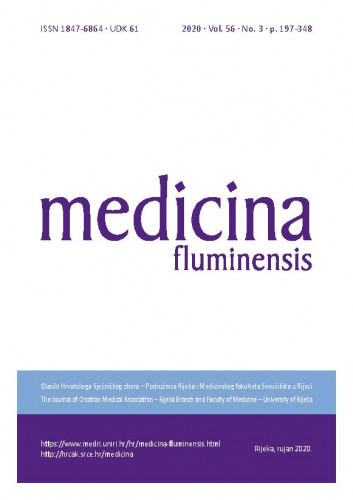Cilj: prezentacija principa, tehnike i rezultata artroskopskog liječenja oštećene tetive subskapularisa. Ispitanici i metode: u razdoblju od 1. siječnja 2015. do 1. siječnja 2019. učinili smo 289 operacija ramena zbog oštećenja tetiva rotatorne manžete. Lezije tetive subskapularisa podijelili smo po Lafosseu i liječili artroskopski ili artroskopski asistirano. Analizirali smo rezultate isključivo artroskopskog liječenja 31 dostupnog pacijenta s lezijom tetive subskapularisa kojima je od operacije do procjene prošlo 6 i više mjeseci. Pacijenti su ispitani o prije i poslijeoperacijskim mogućnostima i tegobama po upitnicima Oxford shoulder score (OSS) i Subjective shoulder value (SSV). Rezultati: kod 89 slučajeva (30,79 %) našli smo oštećenje tetive subkapularisa od kojih 8 izoliranih (2,76 % svih lezija manžete) i 81 udružen s oštećenjem ostalih tetiva manžete. Kod 72 pacijenta (80,9 %) učinili smo artroskopsku operaciju, a u 17 slučajeva otvorenu uz artroskopsku asistenciju. 31 dostupan pacijent iz grupe artroskopski operiranih procijenjen je 17,96 ± 8,25 mjeseci od operacije upitnicima Oxford shoulder score i Subjective shoulder value (odziv 43,05 %). Oxford shoulder score značajno se povećao s 14,19 preoperativno na 36,74 postoperativno (p = 0,002). Subjective shoulder value također se značajno povećao s 27,32 na 82,33 (p <<0,001). Zaključak: artroskopsko liječenje oštećenja tetive subskapularisa, izolirano ili udruženo s ostalim lezijama manžete, predstavlja siguran i efikasan način liječenja s odličnim rezultatima.; Aim: presentation of principles, techniques and results of arthroscopic subscapularis tendon repairs. Patients and methods: In the period from 1st January 2015 until 1st January 2019 we performed 289 rotator cuff repair surgeries. The subscapularis tendon lesions were found, and sorted according to Lafosse classification and operated arthroscopically or arthroscopically assisted. After a minimum of 6 months after surgery we assessed and analysed the results of all arthroscopic treatments of 31 available patients with a subscapularis tendon lesion. The patients were examined for preoperative and postoperative capabilities and difficulties according to the Oxford shoulder score and Subjective shoulder value questionnaires. Results: In 89 cases (30.79%) we found subscapularis tendon tears from which 8 isolated (2.76% of all cuff tears) and 81 combined with other rotator cuff tears. In 72 cases (80.9%) we performed all arthroscopic repair and in 17 cases (19.1%) an open surgery with or without arthroscopic assistance. From all arthroscopic groups of patients, 31 of them were evaluated 17.96 ± 8.25 months postoperatively with patient-based Oxford shoulder score and Subjective shoulder value (response rate 43.05%). Oxford shoulder score improved significantly from 14.19 preoperatively to 36.74 postoperatively (p=0.002). Subjective shoulder value also increased significantly from 27.32 to 82.33 (p<<0.001). Conclusion: Arthroscopic repair of a subscapularis tendon tear, isolated or combined with other rotator cuff tears, represents a safe and effective a surgical method with an excellent outcome.
Sažetak
Dio od

 Medicina Fluminensis : glasilo Hrvatskog liječničkog zbora - Podružnica Rijeka i Medicinskog fakulteta Sveučilišta u Rijeci = the journal of Croatian Medical Association - Rijeka Branch and Faculty of Medicine - University of Rijeka : 56,3(2020) / glavni i odgovorni urednik, editor-in-chief Saša Ostojić.
Medicina Fluminensis : glasilo Hrvatskog liječničkog zbora - Podružnica Rijeka i Medicinskog fakulteta Sveučilišta u Rijeci = the journal of Croatian Medical Association - Rijeka Branch and Faculty of Medicine - University of Rijeka : 56,3(2020) / glavni i odgovorni urednik, editor-in-chief Saša Ostojić.